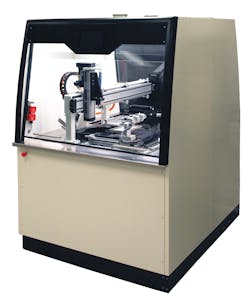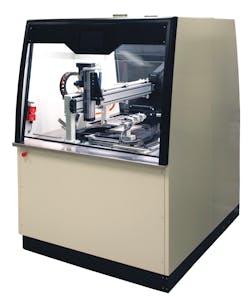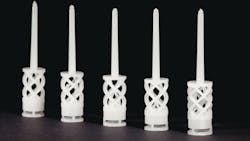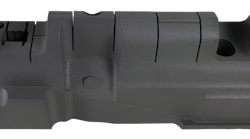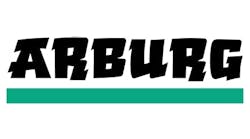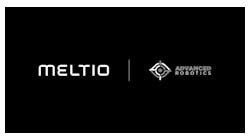Three firms have collaborated to introduce Freeform Injection Molding (FIM) to the U.S. as a means of allowing injection molders to meet the need for injection molded prototypes and tailored components.
FIM uses additively manufactured sacrificial mold inserts, a technology created by Denmark’s AddiFab ApS, which recently established a U.S. office. A mold with the polymer mold inserts is filled with conventional resins in a conventional injection molding machine; the inserts fall off when the molded component is released from the mold.
AddiFab’s roots are in the medical and hearing aid industries, and the company’s goal is to bring the benefits of injection molding to prototyping, low-volume production and customized products. At this spring’s Rapid + TCT additive manufacturing trade show, AddiFab teamed up with Alba Enterprises — importer of the Babyplast line of injection molding machines — and resin supplier Mitsubishi Chemical Americas to showcase the unique capability of FIM to utilize off-the-shelf thermoplastics.
FIM gives mold makers a way to create a mold insert that’s not achievable through traditional mold making means. And, with those inserts, manufacturers retain the versatility of the injection molding process, while making products they might not otherwise be able to produce. To date, the mold inserts have been used in the manufacture of parts made from PEEK, polyphthalamide, polyamide, ABS, PP, polymethyl methacrylate and recycled HDPE, along with several elastomers, silicones, and ceramic and metal materials. KyronMax carbon-fiber-filled polymers from Mitsubishi also can be molded using the process.
The FIM process uses AddiFab’s 3-D printers. They offer very high levels of precision and repeatability when run with AddiFab’s proprietary materials and are available in automated and manually fed configurations. Mold inserts printed on AddiFab printers have been tested extensively on Alba’s line of Babyplast micro injection molding machines.
The mold inserts for the application were 3-D printed by AddiFab. They had a double-helix structure that would have been impossible to make with conventional mold-making approaches.
Oles let booth visitors stand on a rectangular, black lattice structure the size of a golf ball to prove its strength and durability. During the trade show, the record holder was a 295-pound man.
“You can literally stand on this because it’s injection molded. That means processing the materials at the temperature and pressure windows they were designed for,” he said. The parts — which can be injection molded only with the 3-D printed mold inserts — would not be as strong if they were 3-D printed.
“This is high-quality, injection molded parts, using additive manufacturing as a vehicle,” he said. “You could never [create tooling for] a part this complex. You can combine assemblies now into a single part, and design geometries that you couldn’t design before. We have all the strength of injection molding. They [AddiFab] use our machines in their labs. But you can use any injection molding machine. You end up with the quality of injection molding and the benefit of additive manufacturing.”
Since Rapid + TCT, Alba, AddiFab and Mitsubishi have been expanding the collaboration. At Alba’s facility in Torrance, Calif., officials have set up a sample lab with two Babyplast molding machines, and Oles has made a virtual molding cell available so that potential customers can see the process in action.
“If your main line of business is injection molding, and if you are presently using 3-D printing for prototyping, you might want to have a look at FIM,” Oles said.
“Printing of molds, instead of printing of parts, means you could have all the benefits of short lead-times, low start-up costs and freedom of design, with the proven performance of injection molding. FIM is not the answer to all injection molding problems. It is another technology that opens another chamber that we can walk into as a manufacturing industry. We are at the infancy of discovering what this can do.”
Angie DeRosa, contributor
Contact:
Addifab Palo Alto, Calif., 650-526-8121,
